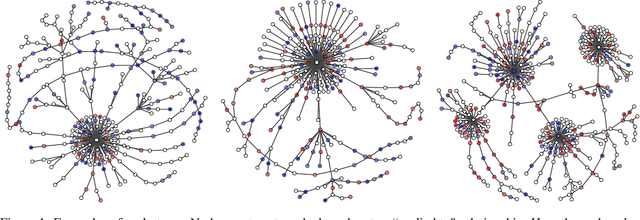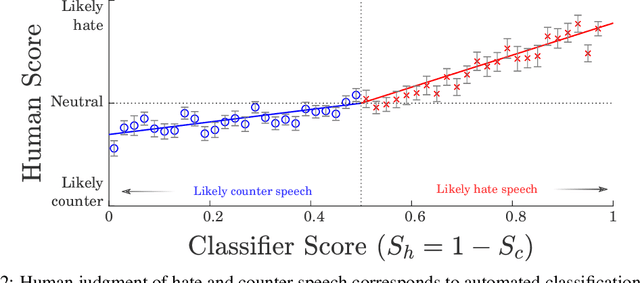Laurent Hébert-Dufresne
Complex contagions can outperform simple contagions for network reconstruction with dense networks or saturated dynamics
Apr 30, 2024Abstract:Network scientists often use complex dynamic processes to describe network contagions, but tools for fitting contagion models typically assume simple dynamics. Here, we address this gap by developing a nonparametric method to reconstruct a network and dynamics from a series of node states, using a model that breaks the dichotomy between simple pairwise and complex neighborhood-based contagions. We then show that a network is more easily reconstructed when observed through the lens of complex contagions if it is dense or the dynamic saturates, and that simple contagions are better otherwise.
Impact and dynamics of hate and counter speech online
Sep 18, 2020



Abstract:Citizen-generated counter speech is a promising way to fight hate speech and promote peaceful, non-polarized discourse. However, there is a lack of large-scale longitudinal studies of its effectiveness for reducing hate speech. We investigate the effectiveness of counter speech using several different macro- and micro-level measures of over 180,000 political conversations that took place on German Twitter over four years. We report on the dynamic interactions of hate and counter speech over time and provide insights into whether, as in `classic' bullying situations, organized efforts are more effective than independent individuals in steering online discourse. Taken together, our results build a multifaceted picture of the dynamics of hate and counter speech online. They suggest that organized hate speech produced changes in the public discourse. Counter speech, especially when organized, could help in curbing hate speech in online discussions.
Countering hate on social media: Large scale classification of hate and counter speech
Jun 05, 2020



Abstract:Hateful rhetoric is plaguing online discourse, fostering extreme societal movements and possibly giving rise to real-world violence. A potential solution to this growing global problem is citizen-generated counter speech where citizens actively engage in hate-filled conversations to attempt to restore civil non-polarized discourse. However, its actual effectiveness in curbing the spread of hatred is unknown and hard to quantify. One major obstacle to researching this question is a lack of large labeled data sets for training automated classifiers to identify counter speech. Here we made use of a unique situation in Germany where self-labeling groups engaged in organized online hate and counter speech. We used an ensemble learning algorithm which pairs a variety of paragraph embeddings with regularized logistic regression functions to classify both hate and counter speech in a corpus of millions of relevant tweets from these two groups. Our pipeline achieved macro F1 scores on out of sample balanced test sets ranging from 0.76 to 0.97---accuracy in line and even exceeding the state of the art. On thousands of tweets, we used crowdsourcing to verify that the judgments made by the classifier are in close alignment with human judgment. We then used the classifier to discover hate and counter speech in more than 135,000 fully-resolved Twitter conversations occurring from 2013 to 2018 and study their frequency and interaction. Altogether, our results highlight the potential of automated methods to evaluate the impact of coordinated counter speech in stabilizing conversations on social media.
Network archaeology: phase transition in the recoverability of network history
Mar 25, 2018



Abstract:Network growth processes can be understood as generative models of the structure and history of complex networks. This point of view naturally leads to the problem of network archaeology: Reconstructing all the past states of a network from its structure---a difficult permutation inference problem. In this paper, we introduce a Bayesian formulation of network archaeology, with a generalization of preferential attachment as our generative mechanism. We develop a sequential importance sampling algorithm to evaluate the posterior averages of this model, as well as an efficient heuristic that uncovers the history of a network in linear time. We use these methods to identify and characterize a phase transition in the quality of the reconstructed history, when they are applied to artificial networks generated by the model itself. Despite the existence of a no-recovery phase, we find that non-trivial inference is possible in a large portion of the parameter space as well as on empirical data.
 Add to Chrome
Add to Chrome Add to Firefox
Add to Firefox Add to Edge
Add to Edge